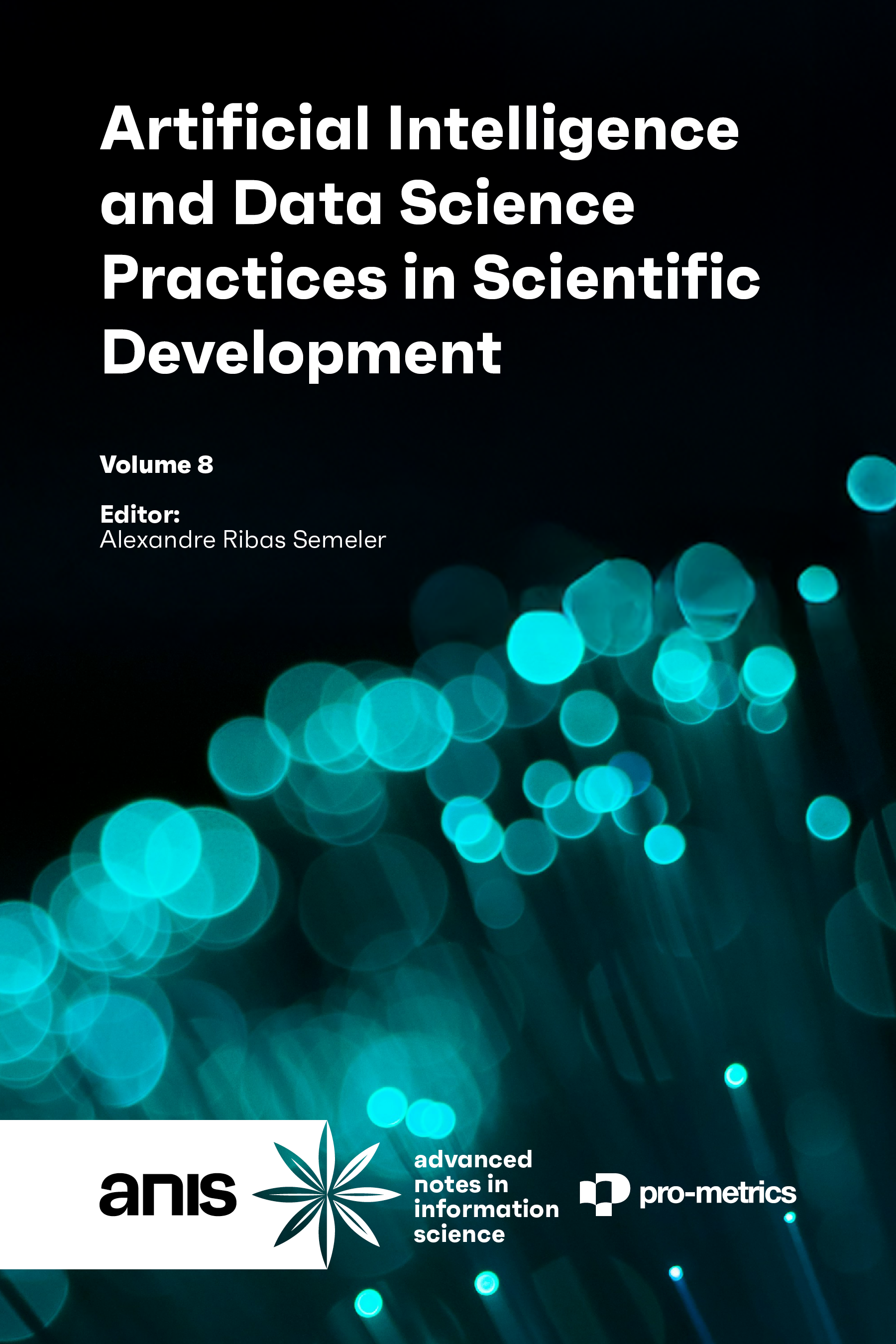Obstetric decision-support system: An informational model for maternal autonomy towards the Agenda 2030 health goals
DOI:
https://doi.org/10.47909/978-9916-9331-4-5.53Keywords:
information systems, evidence-based care, health humanization, UML modeling, obstetric decisionAbstract
This study proposed an obstetric decision-support system with the objective of strengthening maternal autonomy and advancing the health objectives of Agenda 2030, with a particular focus on Sustainable Development Goal 3. The research employed a qualitative, applied, and exploratory approach, integrating digital health, evidence-based care, and epistemological perspectives to formulate a structured environment tailored to pregnant women. The objective of this study was to address critical informational asymmetries in obstetric care through a digitally enabled, evidence-based model that empowered pregnant individuals in clinical decision-making. The methodological approach entailed a comprehensive review of the extant literature, requirement engineering, and the application of Unified Modeling Language diagrams to formalize system functionalities. The results of the study included a multilayer informational infrastructure comprising a dynamic layer for adaptive learning via algorithmic curation of scientific evidence and lived experiences, enabling personalized recommendations, and a static layer for birth planning and scenario simulation, integrating validated guidelines to reduce uncertainty. The integration of scientific evidence with user experiences facilitated the translation of World Health Organization guidelines into comprehensible and implementable information, thereby reducing informational asymmetries and enhancing the gestational decision-making process. The architecture prioritized intelligibility, traceability, and user-centric navigation, ensuring alignment with maternal profiles and preferences. The findings suggested that the formal modeling process facilitated the conversion of normative content into a computable and auditable structure, thereby promoting autonomy without compromising clinical safety. The study’s findings indicated that a digitally mediated informational base, conceptualized at the nexus of health, information, and technology, served as a pivotal infrastructure for ensuring dignified, equitable, and humanized obstetric care. This contributed structurally to high-quality health systems by bridging evidence–practice gaps.
Downloads
References
Almeida Junior, O. F. (2009). Mediação da informação e múltiplas linguagens. Tendências da Pesquisa Brasileira em Ciência da Informação, 2(1), 89–101. http://hdl.handle.net/20.500.11959/brapci/119300
Araújo, E. A. de. (1992). Informação, cidadania e sociedade no Brasil. Informação & Sociedade: Estudos, 2(1), 42–49.
Brasil. (2005, 8 de abril). Lei nº 11.108, de 7 de abril de 2005. Altera a Lei nº 8.080, de 19 de setembro de 1990, para garantir às parturientes o direito à presença de acompanhante durante o trabalho de parto, parto e pós-parto imediato, no âmbito do Sistema Único de Saúde—SUS. Diário Oficial da União, Seção 1, p. 1. https://www.planalto.gov.br/ccivil_03/_ato2004-2006/2005/lei/l11108.html
Brasil. Ministério da Saúde. (2011, 24 de junho). Portaria GM/MS nº 1.459, de 24 de junho de 2011. Institui, no âmbito do Sistema Único de Saúde—SUS—a Rede Cegonha. Diário Oficial da União. https://bvsms.saude.gov.br/bvs/saudelegis/gm/2011/prt1459_24_06_2011.html
Brizuela, V., & Tunçalp, Ö. (2017). Global initiatives in maternal and newborn health. Obstetric Medicine, 10(1), 21–25. https://doi.org/10.1177/1753495X16684987
Coulm, B., Le Ray, C., Lelong, N., Drewniak, N., Blondel, B., & Zeitlin, J. (2012). Obstetric interventions for low-risk pregnant women in France: Do maternity unit characteristics make a difference? Birth, 39(3), 183–191. https://doi.org/10.1111/j.1523-536X.2012.00547.x
Diniz, S. G. (2009). Gênero, saúde materna e o paradoxo perinatal. Revista Brasileira de Crescimento e Desenvolvimento Humano, 19(2), 313–326. https://doi.org/10.7322/jhgd.19944
D’Oliveira, A. F. P. L., Diniz, S. G., & Schraiber, L. B. (2002). Violence against women in health-care institutions: An emerging problem. The Lancet, 359(9318), 1681–1685. https://doi.org/10.1016/S0140-6736(02)08592-6
Domingues, R. M. S. M., Santos, E. M. dos, & Leal, M. da C. (2004). Aspectos da satisfação das mulheres com a assistência ao parto: Contribuição para o debate. Cadernos de Saúde Pública, 20(Suppl. 1), S52–S62. https://doi.org/10.1590/s0102-311x2004000700006
Donabedian, A. (2005). Evaluating the quality of medical care. The Milbank Quarterly, 83(4), 691–729. (Reprinted from The Milbank Memorial Fund Quarterly, 44(3, Pt. 2), pp. 166–203, 1966). https://doi.org/10.1111/j.1468-0009.2005.00397.x
Downe, S., Finlayson, K., & Fleming, A. (2015). What matters to women: A systematic scoping review to identify the processes and outcomes of antenatal care provision that are important to healthy pregnant women. BJOG: An International Journal of Obstetrics & Gynaecology, 123(4), 529–539. https://doi.org/10.1111/1471-0528.13847
EURO-PERISTAT Project with SCPE and EUROCAT. (2013, May). European Perinatal Health Report: The health and care of pregnant women and babies in Europe in 2010. https://www.europeristat.com/images/European%20Perinatal%20Health%20Report_2010.pdf
Fuck, M. P., & Vilha, A. M. (2012). Inovação tecnológica: Da definição à ação. Contemporâneos: Revista de Artes e Humanidades, (9), 1–17.
Guimarães, M. C., & Silva, C. H. (2011). Acesso à informação em saúde: Por uma agenda política. In Anais do XII Encontro Nacional de Pesquisa em Ciência da Informação (pp. 3551–3563). UNB; ANCIB. https://www.arca.fiocruz.br/handle/icict/327
Hamilton, K., & Miles, R. (2006). Learning UML 2.0. O’Reilly. https://jti.polinema.ac.id/wp-content/uploads/2019/02/Buku-Learning-UML-2.0.pdf
Institute of Medicine (US) Committee on Quality of Health Care in America. (2001). Crossing the quality chasm: A new health system for the 21st century. National Academies Press.
Kruk, M. E., Gage, A. D., Arsenault, C., Jordan, K., Leslie, H. H., Roder-DeWan, S., Adeyi, O., Barker, P., Daelmans, B., Doubova, S. V., English, M., García-Elorrio, E., Guanais, F., Gureje, O., Hirschhorn, L. R., Jiang, L., Kelley, E., Lemango, E. T., Liljestr, J., … Pate, M. (2018). High-quality health systems in the Sustainable Development Goals era: Time for a revolution. The Lancet Global Health, 6(11), e1196–e1252. https://doi.org/10.1016/S2214-109X(18)30386-3
Leite, R. A. F., Brito, E. S., Silva, L. M. C., Palha, P. F., & Ventura, C. A. A. (2014). Access to healthcare information and comprehensive care: Perceptions of users of a public service. Interface (Botucatu), 18(51), 661–671. https://doi.org/10.1590/1807-57622013.0334
Leite, T. H., Marques, E. S., Esteves-Pereira, A. P, Nucci, M. F., Santos, Y. R. P, & Leal, M. C. (2021). Desrespeitos e abusos, maus tratos e violência obstétrica: um desafio para a epidemiologia e a saúde pública no Brasil. Ciência & Saúde Coletiva, 27(2), 483–491. https://doi.org/10.1590/1413-81232022272.38592020
Macedo, D. D. J., Von Wangenheim, A., & Dantas, M. A. R. (2015). A data storage approach for large-scale distributed medical systems. In 2015 Ninth International Conference on Complex, Intelligent, and Software Intensive Systems (pp. 486–490). Santa Catarina, Brazil. https://doi.org/10.1109/CISIS.2015.88
Ministério da Saúde. (2000). Humanização do parto: Humanização no pré-natal e nascimento.
Mota, F. R. L., Araujo, N. C., & Santos, P. A. I. C. (2015). Necessidades informacionais das gestantes atendidas em unidades básicas de saúde do bairro Benedito Bentes—Maceió/AL [Paper presentation]. In XVI Encontro Nacional de Pesquisa em Ciência da Informação (ENANCIB). João Pessoa, PB, Brasil. http://www.ufpb.br/evento/index.php/enancib2015/enancib2015/paper/viewFile/2962/1267
Object Management Group (OMG). (2011, August). Unified modeling language TM: Superstructure (Version 2.4.1). https://www.omg.org/spec/UML/2.4.1/Superstructure/PDF
Office of the United Nations High Commissioner for Human Rights (OHCHR). (2012). Technical guidance on the application of a human rights-based approach to the implementation of policies and programmes to reduce preventable maternal morbidity and mortality (A/HRC/21/22). https://www2.ohchr.org/english/issues/women/docs/A.HRC.21.22_en.pdf
Pan American Health Organization (PAHO). (2019). Recomendaciones de la OMS: Cuidados durante el parto para una experiencia de parto positiva.
Puel, A., Wangenheim, A. V., Meurer, M. I., & Macedo, D. D. J. (2014). BUCOMAX: Collaborative multimedia platform for real time manipulation and visualization of bucomaxillofacial diagnostic images. In 2014 IEEE 27th International Symposium on Computer-Based Medical Systems (pp. 392–395). New York, NY, USA. https://doi.org/10.1109/CBMS.2014.12
Reneker, M. H. (1993). A qualitative study of information seeking among members of an academic community: Methodological issues and problems. Library Quarterly, 63(4), 487–507. https://doi.org/10.1086/602618
Renfrew, M. J., McFadden, A., Bastos, M. H., Campbell, J., Channon, A. A., Cheung, N. F., Silva, D. R. A. D., Downe, S., Kennedy, H. P., Malata, A., McCormick, F., Wick, L., & Declercq, E. (2014). Midwifery and quality care: Findings from a new evidence-informed framework for maternal and newborn care. The Lancet, 384(9948), 1129–1145. https://doi.org/10.1016/S0140-6736(14)60789-3
Royal College of Obstetricians and Gynaecologists. (2017). Annual review 2016/2017. https://www.rcog.org.uk/media/thmfgugt/2017.pdf
Russo, J. A., & Carrara, S. L. (2015). Sobre as ciências sociais na saúde coletiva – com especial referência à antropologia. Physis: Revista de Saúde Coletiva, 25(2), 467–484. https://doi.org/10.1590/S0103-73312015000200008
Sbissa, P. P. M., Schneider, D. R., & Sbissa, A. S. (2011). Characterization of the epistemological development of health and complementary practices. Arquivos Catarinenses de Medicina, 40(2), 70–77. https://www.acm.org.br/revista/pdf/artigos/871.pdf
Silva, E. L., & Menezes, E. M. (2001). Metodologia da pesquisa e elaboração de dissertação (3ª ed. rev. atual.). Laboratório de Ensino a Distância da UFSC.
Soares, T. S., Dantas, M. A. R., de Macedo, D. D. J., & Bauer, M. A. (2013). A data management in a private cloud storage environment utilizing high performance distributed file systems. In 2013 Workshops on Enabling Technologies: Infrastructure for Collaborative Enterprises (pp. 158-163). Hammamet, Tunisia. https://doi.org/10.1109/WETICE.2013.12
Souza, V. B., Roecker, S., & Marcon, S. S. (2011). Ações educativas durante a assistência pré-natal: Percepção de gestantes atendidas na rede básica de Maringá-PR. Revista Eletrônica de Enfermagem, 13(2), 199–210. https://doi.org/10.5216/ree.v13i2.10450
Souza Inácio, A. de, Andrade, R., von Wangenheim, A., & de Macedo, D. D. J. (2014). Designing an information retrieval system for the STT/SC. In 2014 IEEE 16th international conference on e-health networking, applications and services (Healthcom) (pp. 500–505). Natal, Brazil. https://doi.org/10.1109/HealthCom.2014.7001893
Tamrat, T., Ratanaprayul, N., Barreix, M., Tunçalp, O., Lowrance, D., Thompson, J., Rosenblum, L., Kidula, N., Chahar, R., Gaffield, M. E., Festin, M., Kiarie, J., Taliesin, B., Leitner, C., Wong, S., Wi, T., Kipruto, H., Adegboyeg, A., Muneene, D., Say, L., & Mehl, G. (2022). Transitioning to digital systems: The role of World Health Organization’s Digital Adaptation Kits in operationalizing recommendations and interoperability standards. Global Health: Science and Practice, 10(1), Article e2100320. https://doi.org/10.9745/GHSP-D-21-00320
Targino, M. das G. (1991). Biblioteconomia, informação e cidadania. Revista da Escola de Biblioteconomia da UFMG, 20(2), 149–160. https://www.brapci.inf.br/index.php/article/download/13455
Tobar, F., & Romano Yalour, M. (2001). Como fazer teses em saúde pública. Fiocruz.
Triviños, A. N. S. (1987). Introdução à pesquisa em Ciências Sociais: A pesquisa qualitativa em Educação. Atlas.
United Nations (UN). (2015). Transforming our world: The 2030 Agenda for Sustainable Development. https://sdgs.un.org/2030agenda
World Health Organization (WHO). (1946). Constitution of the World Health Organization. https://www.who.int/about/governance/constitution
World Health Organization (WHO). (2014). Prevenção e eliminação de abusos, desrespeito e maus-tratos durante o parto em instituições de saúde. https://iris.who.int/bitstream/handle/10665/134588/WHO_RHR_14.23_por.pdf
World Health Organization (WHO). (2015). Global strategy for women’s, children’s and adolescents’ health (2016-2030). https://www.who.int/publications/i/item/9789241510348
World Health Organization (WHO). (2018). WHO recommendations: Intrapartum care for a positive childbirth experience. https://iris.who.int/bitstream/handle/10665/260178/9789241550215-eng.pdf?sequence=1&isAllowed=y
World Health Organization (WHO). (2019). WHO guideline: Recommendations on digital interventions for health system strengthening. https://iris.who.int/bitstream/handle/10665/311941/9789241550505-eng.pdf?sequence=31
World Health Organization (WHO). (2021). Digital adaptation kit for antenatal care: Operational requirements for implementing WHO recommendations in digital systems. https://iris.who.int/bitstream/handle/10665/339745/9789240020306-eng.pdf?sequence=1
World Health Organization (WHO), & International Telecommunication Union (ITU). (2012). National eHealth strategy toolkit.
Zorzam, B. A. O. Z. (2013). Informação e escolhas no parto: Perspectivas das mulheres usuárias do SUS e da saúde suplementar [Dissertação de Mestrado, Universidade de São Paulo]. Repositório de Teses e Dissertações da USP. https://www.teses.usp.br/teses/disponiveis/6/6136/tde-10112013-223016/publico/BiancaAlves.pdf
Downloads
Published
How to Cite
Issue
Section
License
Copyright (c) 2025 Paulianne Fontoura Guilherme de Souza, Gustavo Genraldo de Sá Teles Junior, Douglas Dyllon Jeronimo de Macedo

This work is licensed under a Creative Commons Attribution-NonCommercial 4.0 International License.
This is an open access article distributed under the terms of the Creative Commons Attribution-NonCommercial 4.0 International License (CC BY-NC 4.0) which permits copying and redistributing the material in any medium or format, adapting, transforming and building upon the material as long as the license terms are followed.


